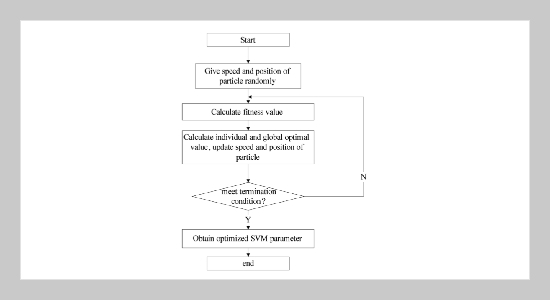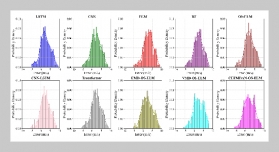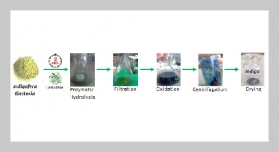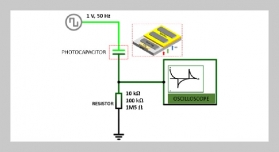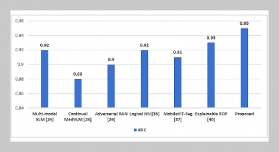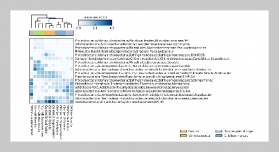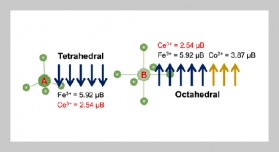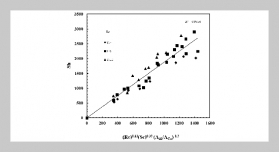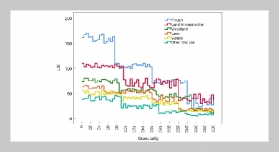REFERENCES
- [1] Tang, S. and Gao, H., “Traffic-incident Detection-algorithm Based on Nonparametric Regression,” Intelligent Transportation Systems IEEE Transactions on, Vol. 6, No. 1, pp. 38�42 (2005). doi: 10.1109/TITS. 2004.843112
- [2] Cheng, X., Lin, W., Liu, E. and Gu, D., “Highway Traffic Incident Detection Based on bpnn,” Procedia Engineering, Vol. 7, pp. 482�489 (2010). doi: 10.1016/ j.proeng.2010.11.080
- [3] Yuan, F. and Cheu, R., “Incident Detection Using Support Vector Machines,” Transportation Research Part C: Emerging Technologies, Vol. 11, No. 3, pp. 309� 328 (2003). doi: 10.1016/S0968-090X(03)00020-2
- [4] Binglei, X., Zheng, H. and Hongwei, M., “Fuzzy-logic-based Traffic Incident Detection Algorithm for Freeway,” Proc. The 7th International Conference on Machine Learning and Cybernetics, pp. 1254�1259 (2008). doi: 10.1109/ICMLC.2008.4620597
- [5] Cai, Z., Jiang, G. and Ding, Q., “Study on Automated Incident Detection Algorithms Based on Multi-svm Classifier,” Chinese Control and Decision Conference CCDC 2008, pp. 100�106 (2008). doi: 10.1109/CCDC. 2008.4597539
- [6] Chen, S., Wang, W. and Van Zuylen, H., “Construct Support Vector Machine Ensemble to Detect Traffic Incident,” Expert Systems with Applications, Vol. 36, No. 8, pp. 10976�10986 (2009). doi: 10.1016/j.eswa. 2009.02.039
- [7] Xiao, J. and Liu, Y., “Traffic Incident Detection Using Multiple Kernel Support Vector Machine,” Transportation Research Board 91th Annual Meeting, pp. 201� 207 (2012). doi: 10.3141/2324-06
- [8] Wang, W., Chen, S. and Qu, G., “Incident Detection Algorithm Based on Partial Least Squares Regression,” Transportation Research Part C: Emerging Technologies, Vol. 16, No. 1, pp. 54�70 (2008). doi: 10.1016/j. trc.2007.06.005
- [9] Yan, G., Olariu, S. and Popescu, D. C., “NOTICE: an Architecture for the Notification of Traffic Incidents,” IEEE Communications Magazine, Vol. 4, No. 4, pp. 6�16 (2012). doi: 10.1109/MITS.2012.2217571
- [10] Li, W. J., Jing, B. S. and Yang, G. W., “The Incident Detection Algorithm Based on Wavelet Analysis,” Journal of Xi ‘an Highway Traffic University, Vol. 17, No. 2, pp. 134�138 (1997).
- [11] Jiang, Z. F. and Liu, X. K., “Traffic Incident Detection Algorithm Based on Neural Network,” JournalofXi’an Highway Traffic University, Vol. 17, No. 3, pp. 104� 108 (2001). doi: 10.1061/41039(345)473
- [12] Wen, J. and He, G. G., “Neural Network Traffic Incident Automatic Detection Algorithm Based on Data Preprocessing of Rough Set Theory,” Transportation Systems Engineering and Information Technology, Vol. 4, pp. 54�59 (2004).
- [13] Yao, Z. S. and Shao, C. F., “Traffic Incident Detection Method Research Based on V-support Vector Machine Classification,” Journal of ITS Communication, Vol. 7, No. 4, pp. 38�41 (2005).
- [14] Liang, X. R. and Liu, Z. Y., “Highway Incident Detection Based on Support Vector Machine,” Computer Engineering and Application, No. 16, pp. 213�218 (2006).
- [15] Cai, Z. L. and Jiang, G. Y., “Highway AID Based on Multiple SVM Classifier Fusion Technology,” The 27th Chinese Control Conference, Kunming, China, pp. 205� 211 (2008).
- [16] Zhu, H. B., “Traffic Incident Detection Based on the Bagging Algorithm and Genetic Neural Network,” Journal of Computer Application and Software, Vol. 1, No. 27, pp. 234�236 (2010).
- [17] Wang, Q., “Traffic Incident Detection Based on Artificial Neural Network,” Proc. IEEE 3rd International Conference on Communication Software and Networks, pp. 657�659 (2011). doi: 10.1109/ICCSN.2011.6014812
- [18] Wang, F. Y., “Parallel Control and Management for Intelligent Transportation Systems: Concepts Architectures and Applications,” IEEE Trans. Intell. Transp. Syst., Vol. 11, No. 3, pp. 630�638 (2010). doi: 10. 1109/TITS.2010.2060218
- [19] Barria, J. A. and Thajchayapong, S., “Detection and Classification of Traffic Anomalies Using Microscopic Traffic Variables,” IEEE Trans. Intelligent Transportation Systems, Vol. 12, No. 3, pp. 695�704 (2011). doi: 10.1109/TITS.2011.2157689
- [20] Fan, S., Tian, F. C., He, Q. H., Jia, P. F., Feng, J. W. and Shen, Y., “Wound Infection Recognition Based on Quantum-behaved Particle Swarm Optimization,” Journal of Convergence Information Technology, Vol. 8, No. 5, pp. 1209�1219 (2012). doi: 10.4156/jcit.vol8. issue5.140


